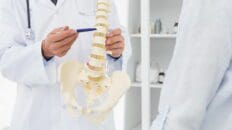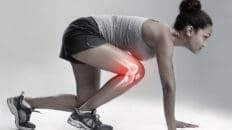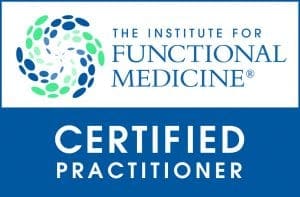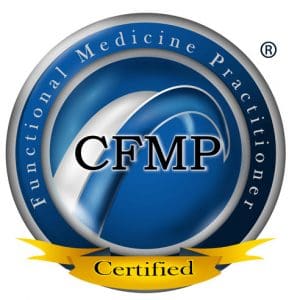Bioelectrical impedance analysis allows an integrative, complete, duplicable, and easy body composition assessment that provides in-depth information about the patient’s nutritional status. This process makes nutritional assessment more accessible for the elderly, a growing population globally, with particular health concerns. There is a clear association between frailty, locomotive syndrome, and anthropometric markers, such as phase angle. Furthermore, BIA being an easy-access device and phase angle can be a helpful indicator and prevent further complications associated with age and body composition.
Age-related complications have risen, falls and longer-term care have a close association with the growing elderly population. Furthermore, the prevention of these conditions is essential to prolong heal
Bioelectrical impedance analysis allows an integrative, complete, duplicable, and easy body composition assessment that provides in-depth information about the patient’s nutritional status. This process makes nutritional assessment more accessible for the elderly, a growing population globally, with particular health concerns. There is a clear association between frailty, locomotive syndrome, and anthropometric markers, such as phase angle. Furthermore, BIA being an easy-access device and phase angle can be a helpful indicator and prevent further complications associated with age and body composition.
Age-related complications have risen, falls and longer-term care have a close association with the growing elderly population. Furthermore, the prevention of these conditions is essential to prolong healthy life and reduce long-term care. However, as mentioned before, with age comes particular needs that can complicate clinical assessment.
Table of Contents
Age-related complications:
The locomotive syndrome is a condition in which mobility functions, such as sit-to-stand or gait, are reduced due to a locomotive organ impairment. Also, the locomotive syndrome (LoS) has three major components:
1.- Bones.
2.- Joints and intervertebral discs.
3.- Muscles and nerves.
Diseases like osteoarthritis, osteoporosis, spondylosis, sarcopenia, and neural disorders are part of LoS.
Frailty:
Frailty refers to a fragile state of mind and body that leads to health problems and diminished resistance to stress; it can influence body composition, physical function and physical activity, fatigue, psychophysiological state, and even social function. However, frailty can be reversed with the proper intervention and support.
Frailty has five components:
1.- Excessive weight loss.
2.- Exhaustion.
3.- Low activity.
4.- Slowness.
5.- Weakness.
Indeed, the measured and quantifiable frailty symptoms and signs are unintentional weight loss, fatigue, poor handgrip strength, and slow walking speed.Â
The assessment and evaluation of these markers are vital for diagnosing conditions like frailty and LoS. However, applying different medical examinations or measurements is extremely difficult in this population due to the large number or need for a unique device, each patient’s physical capabilities, and facilities.
Furthermore, phase angle, an important clinical marker that measures the cell’s membrane integrity and function, is closely linked with medical outcomes such as frailty. Besides, the Phase Angle is a good measurement due to its high predictive capacity and its association with positive medical results.
Phase angle can describe the quality and amount of soft tissue and represents cellular membrane function and integrity. Therefore, a high phase angle reflects good health, whereas a lower phase angle is associated with poor health outcomes. Also, the phase angle depends on age and sex, and its application in the elderly needs to be adjusted.
Clinical applications:
In a Japanese elderly population, the Phase angle marker was measured with an InBody 770 device to determine its relation with LoS and Frailty. This study found that patients diagnosed with frailty and LoS had a significantly lower phase angle. As stated before, the phase angle marker needs to be adjusted in this population due to its relation with age and sex. Therefore, after adjusting for sex, age, and BMI (the relation between body weight and height), a low phase angle result was considered a risk factor of LoS and frailty.Â
Furthermore, in women, frailty was more prevalent than LoS, while in men, frailty was less prevalent than LoS. However, in both groups, the phase angle was low in the presence of LoS and frailty. The nature of both conditions explains this phenomenon since LoS is reflective of poor mobility. On the other hand, frailty is a more multifaceted disease, accompanied by sarcopenia, poor nutritional status, and decreased mental health. Finally, the etiology and pathogenesis of frailty are significantly associated with a lower phase angle.
BIA
BIA is an easy-to-use anthropometric assessment with a wide variety of applications. The elderly population’s needs can be easily met using a BIA device, preventing falls, diminishing costs, and providing a quick but specialized body composition assessment. The phase angle marker is a clinical measurement related to frailty and locomotive syndrome, ensuring immediate detection and preventing further complications.
The particular needs of the elderly population may interfere with a complete nutritional assessment. As crucial as it might be to have an anthropometric examination, the loss of movement or frailty can make it impossible to assess the patient adequately. A BIA device can make an easy examination, provide crucial markers such as phase angle and ensure rapid detection of any complications related to age and body composition. – Ana Paola RodrÃguez Arciniega, MS
References:
Tanaka, Satoshi et al. “Low Bioelectrical Impedance Phase Angle Is a Significant Risk Factor for Frailty.” BioMed research international vol. 2019 6283153. 10 Jun. 2019, doi:10.1155/2019/6283153
Hirose, Suguru et al. “Phase Angle as an Indicator of Sarcopenia, Malnutrition, and Cachexia in Inpatients with Cardiovascular Diseases.” Journal of clinical medicine vol. 9,8 2554. 6 Aug. 2020, doi:10.3390/jcm9082554
Additional Online Links & Resources (Available 24/7)
Â
Online Appointments or Consultations: bit.ly/Book-Online-Appointment
Â
Online Physical Injury / Accident Intake Form:Â bit.ly/Fill-Out-Your-Online-HistoryÂ
Â
Online Functional Medicine Assessment:Â bit.ly/functionmed
Â
Disclaimer
Â
The information herein is not intended to replace a one-on-one relationship with a qualified healthcare professional, licensed physician, and not medical advice. We encourage you to make your own health care decisions based on your research and partnership with a qualified health care professional. Our information scope is limited to chiropractic, musculoskeletal, physical medicines, wellness, sensitive health issues, functional medicine articles, topics, and discussions. We provide and present clinical collaboration with specialists from a wide array of disciplines.
Each specialist is governed by their professional scope of practice and their jurisdiction of licensure. We use functional health & wellness protocols to treat and support care for the musculoskeletal system’s injuries or disorders. Our videos, posts, topics, subjects, and insights cover clinical matters, issues, and issues that relate to and support, directly or indirectly, our clinical scope of practice.* Our office has made a reasonable attempt to provide supportive citations and has identified the relevant research study or studies supporting our posts. We provide copies of supporting research studies available to regulatory boards and the public upon request. We understand that we cover matters that require an additional explanation of how it may assist in a particular care plan or treatment protocol; therefore, to further discuss the subject matter above, please feel free to ask Dr. Alex Jimenez or contact us at 915-850-0900. Read More.
Dr. Alex Jimenez DC, MSACP, CCST, IFMCP*, CIFM*, CTG*
email: coach@elpasofunctionalmedicine.com
phone: 915-850-0900
Licensed in Texas & New Mexico
General Disclaimer
Professional Scope of Practice *
The information herein on "Frailty and Locomotive Syndrome: How Phase Angle can Improve their Detection." is not intended to replace a one-on-one relationship with a qualified health care professional or licensed physician and is not medical advice. We encourage you to make healthcare decisions based on your research and partnership with a qualified healthcare professional.
Blog Information & Scope Discussions
Welcome to El Paso's Premier Wellness and Injury Care Clinic wellness blog, where Dr. Alex Jimenez, DC, FNP-C, a board-certified Family Practice Nurse Practitioner (FNP-C) and Chiropractor (DC), presents insights on how our team is dedicated to holistic healing and personalized care. Our practice aligns with evidence-based treatment protocols inspired by integrative medicine principles, similar to those found on dralexjimenez.com, focusing on restoring health naturally for patients of all ages.
Welcome to El Paso's Premier Wellness and Injury Care Clinic & wellness blog, where Dr. Alex Jimenez, DC, FNP-C, a board-certified Family Practice Nurse Practitioner (FNP-C) and Chiropractor (DC), presents insights on how our team is dedicated to holistic healing and personalized care. Our practice aligns with evidence-based treatment protocols inspired by integrative medicine principles, similar to those found on dralexjimenez.com, focusing on restoring health naturally for patients of all ages.
Our areas of chiropractic practice include Wellness & Nutrition, Chronic Pain, Personal Injury, Auto Accident Care, Work Injuries, Back Injury, Low Back Pain, Neck Pain, Migraine Headaches, Sports Injuries, Severe Sciatica, Scoliosis, Complex Herniated Discs, Fibromyalgia, Chronic Pain, Complex Injuries, Stress Management, Functional Medicine Treatments, and in-scope care protocols.
Our information scope is limited to chiropractic, musculoskeletal, physical medicine, wellness, contributing etiological viscerosomatic disturbances within clinical presentations, associated somato-visceral reflex clinical dynamics, subluxation complexes, sensitive health issues, and functional medicine articles, topics, and discussions.
We provide and present clinical collaboration with specialists from various disciplines. Each specialist is governed by their professional scope of practice and their jurisdiction of licensure. We use functional health & wellness protocols to treat and support care for the injuries or disorders of the musculoskeletal system.
Our videos, posts, topics, subjects, and insights cover clinical matters, issues, and topics that relate to and directly or indirectly support our clinical scope of practice.*
Our office has reasonably attempted to provide supportive citations and has identified the relevant research studies or studies supporting our posts. We provide copies of supporting research studies available to regulatory boards and the public upon request.
We understand that we cover matters that require an additional explanation of how they may assist in a particular care plan or treatment protocol; therefore, to discuss the subject matter above further, please feel free to ask Dr. Alex Jimenez, DC, APRN, FNP-BC, or contact us at 915-850-0900.
We are here to help you and your family.
Blessings
Dr. Alex Jimenez DC, MSACP, APRN, FNP-BC*, CCST, IFMCP, CFMP, ATN
email: coach@elpasofunctionalmedicine.com
Licensed as a Doctor of Chiropractic (DC) in Texas & New Mexico*
Texas DC License # TX5807
New Mexico DC License # NM-DC2182
Licensed as a Registered Nurse (RN*) in Texas & Multistate
Texas RN License # 1191402
ANCC FNP-BC: Board Certified Nurse Practitioner*
Compact Status: Multi-State License: Authorized to Practice in 40 States*
Graduate with Honors: ICHS: MSN-FNP (Family Nurse Practitioner Program)
Degree Granted. Master's in Family Practice MSN Diploma (Cum Laude)
Dr. Alex Jimenez, DC, APRN, FNP-BC*, CFMP, IFMCP, ATN, CCST
My Digital Business Card



















